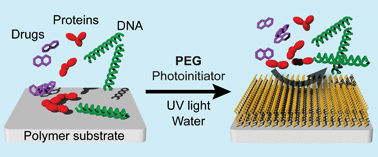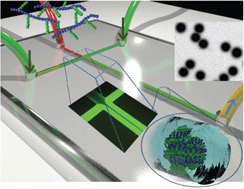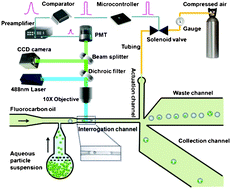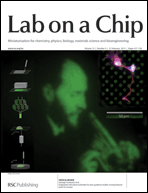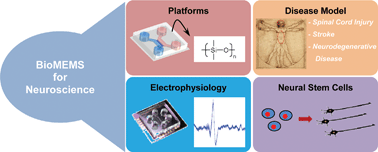This blog post on Valentine’s Day relates an advance from Choongbae Park and Steven Wereley at Purdue University, USA, in controlling the flow of a microfluid in a microchannel using a hybrid opto-electronic device.
The ability to manipulate the flow of fluid and particles in a microchannel is important to give a higher level of control over processes like mixing and delivery of particles in an experiment. Ideally, this needs to be fast, stable and tunable.
In this HOT article, the researchers generate twin opposing microvortices (TOMVs) by applying an AC electric field between a pair of ITO electrodes on the upper surface of the closed channel. TOMVs are vortices that are symmetric but steadily rotating in different directions. The vortices are generated when a laser beam spot is positioned on any part of the exposed electrode.
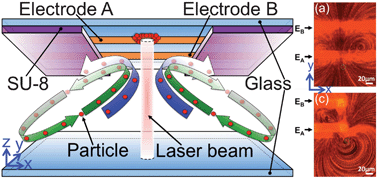 The flow of particles is controlled by the vortices. In turn, the vortices can be controlled by changing the position of the laser spot. Particles moving through the channel near the laser spot move fast when they are close to the upper surface and slower near to the bottom. There is also a strong, fast jet flow between the vortices, where the fluid flow is much faster.
The flow of particles is controlled by the vortices. In turn, the vortices can be controlled by changing the position of the laser spot. Particles moving through the channel near the laser spot move fast when they are close to the upper surface and slower near to the bottom. There is also a strong, fast jet flow between the vortices, where the fluid flow is much faster.
The team looks in detail at the mechanism of the flow and the many parameters that affect it, such as temperature gradients and voltage. They also demonstrate the application of the device in manipulating a milk emulsion. For this, they use a pair of laser beams, as well as the pair of electrodes, generating a new kind of flow. The use of two laser beams enables the control of the width and speed of the faster jet flow region.
All HOT articles are free to access for 4 weeks*. Read the article and full and watch the supplementary videos to get the full picture:
Rapid generation and manipulation of microfluidic vortex flows induced by AC electrokinetics with optical illumination
Choongbae Park and Steven T. Wereley
DOI: 10.1039/C3LC41021H
*Free access to individuals is provided through an RSC Publishing personal account. Registration is quick, free and simple











